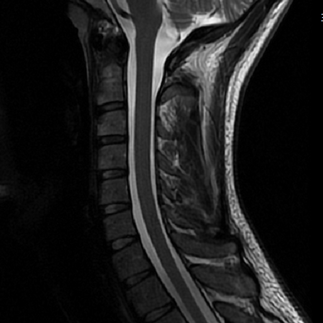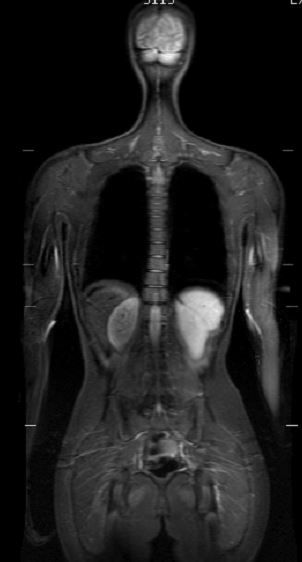The Critical Importance of Imaging Techniques in Early Disease Detection and Diagnosis
- Excel Imaging Center

- May 1
- 4 min read
In the fast-paced world of modern medicine, imaging techniques play a vital role in detecting diseases early. From identifying life-threatening cancers to diagnosing common heart conditions, the impact of these technologies on health and wellness is profound. Early detection can mean the difference between a treatable diagnosis and a more complex health struggle.
Imaging includes various techniques such as X-rays, MRIs, CT scans, and ultrasounds. Each option has specific uses and offers unique insights into our bodies. As awareness of early detection benefits grows, the role of these tools in preventive medicine has never been more crucial. They empower healthcare providers to intervene before health issues escalate into severe conditions.

The Evolution of Imaging Techniques
Imaging technologies have transformed significantly since the first X-ray was discovered by Wilhelm Conrad Röntgen in 1895. This groundbreaking innovation revolutionized diagnostics, laying the groundwork for the development of more advanced methods.
Today's techniques, like MRI (Magnetic Resonance Imaging) and CT (Computed Tomography) scans, offer detailed images of soft tissues and organs. For instance, MRIs can reveal subtle changes in brain structure, while CT scans provide intricate details of internal organs. These advancements have increased diagnostic accuracy, allowing healthcare professionals to detect potentially serious conditions early on.
How Imaging Aids Early Disease Detection
Each imaging technique comes with distinct benefits. Their combined usage greatly enhances the chance of catching diseases early. For example, mammograms have shown to reduce breast cancer mortality by about 30% in women aged 40 to 74 when part of regular screenings. Similarly, CT scans can detect lung diseases at earlier stages compared to standard X-rays, with sensitivity rates increasing by up to 25% for certain conditions.
The ability to diagnose early is crucial. Research shows that patients with early-stage diseases often have better treatment options, leading to improved survival rates. By using imaging technologies, healthcare providers can identify risk factors and implement targeted preventive measures that can significantly affect patient outcomes.
The Role of Imaging in Specific Diseases
Cancer Detection
Cancer is one of the leading causes of death worldwide. Imaging is essential for its early detection. Techniques such as PET scans and MRIs allow healthcare providers to visualize tumors and understand how far cancer has spread. For example, women who undergo regular mammography screenings can have breast cancer detected at stages 0 or I, where treatment success rates are approximately 90%.
Cardiovascular Diseases
Cardiovascular diseases also highlight the importance of imaging for early diagnosis. Tools like echocardiograms can reveal heart issues, and CT angiography can detect blockages in major arteries. When issues such as coronary artery disease are caught early, patients can make lifestyle adjustments or receive medical interventions to significantly lower their chances of heart attacks or strokes.
Neurological Disorders
In neurology, timely detection is critical. Here, MRI scans are invaluable for diagnosing conditions like multiple sclerosis and Alzheimer's disease. Early recognition can lead to effective treatment plans that help manage symptoms and improve patients’ quality of life. For instance, studies indicate that early diagnosis of Alzheimer's can delay symptom progression by up to 3 years with the right interventions.
The Impact of Early Detection on Treatment Outcomes
The link between early detection through imaging and better health outcomes is clear. Diseases spotted at an early stage tend to be less aggressive and often respond better to treatment. For example, patients with stage I cancers might need less intensive treatments, which can reduce side effects and maintain a higher quality of life.
The financial benefits are significant, too. Advanced disease stages typically require more extensive, costly interventions. According to a study by the National Cancer Institute, early-stage cancer treatments can cost nearly 50% less than those for late-stage cancers. By prioritizing imaging for early detection, healthcare systems can lower long-term costs while also improving patient results.
Future Prospects in Imaging Technology
As technology progresses, the future of imaging in early disease detection looks promising. Innovations in artificial intelligence (AI) and machine learning are refining imaging techniques, allowing for quicker and more accurate result interpretations. For example, AI algorithms can analyze imaging scans to detect anomalies that may not be visible to the human eye, prioritizing patients who need immediate attention.
The merger of imaging with other diagnostic methods, like blood tests or genetic assessments, opens new avenues for identifying at-risk individuals. This integration can lead to earlier disease detection and more effective risk assessments, giving healthcare providers a fuller picture of a patient's health status.
The Bottom Line
Imaging techniques are foundational in early disease detection and diagnosis. They boost diagnostic precision and offer the significant benefit of identifying diseases before they progress to critical stages. As technology marches forward, these tools will shape the future of healthcare, promoting prevention and proactive health management.
With ongoing advancements, the significance of these diagnostic techniques is clearer than ever. They play a crucial role in enhancing patient outcomes, reducing healthcare costs, and ultimately saving lives. Understanding and utilizing the power of imaging is essential in the continuing battle against diseases.








Comments